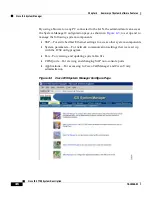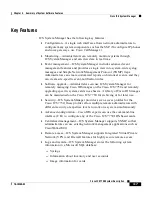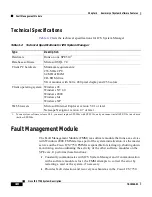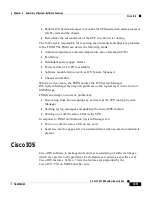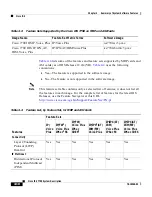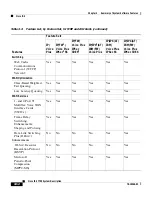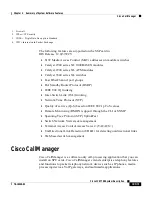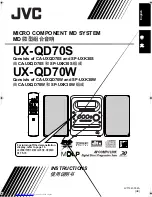
Chapter 3 Summary of Power and Cooling System Features
Power Protection Component
3-8
Cisco ICS 7750 System Description
78-10360-02
•
It provides power to the Cisco ICS 7750 and Catalyst switches during power
disturbances.
•
When connected to a serial port on the SAP card, the UPS can be monitored
for alarms.
•
Using the inline power feature, Catalyst switches that are protected by a UPS
provide power to the IP Phones, which are then unaffected by power
disturbances.
A UPS has battery power that keeps equipment running for a certain period of
time. Up to five battery packs can be added to a UPS for additional power. Also,
the UPS can be configured to handle Simple Network Management Protocol
(SNMP) management, remote monitoring, and alarm reporting.
The UPS can handle a maximum load of up to 1400 VA (1050W) for all equipment
that is connected to it. For information on the APC Smart-UPS, refer to the user
manual that comes with the APC UPS.
Cisco RPS 300
The Cisco RPS 300 provides a fully redundant power source connection for up to
six Catalyst switches (see
Chapter 7, “Features of LAN-Based Switching
Technologies,”
for additional information about compatible switches). When a
power failure occurs in one of the switches, the RPS 300 automatically supplies
power to the switch. The RPS 300 can power only one switch at a time. For
complete redundancy, you should connect each switch in the Cisco ICS 7750 to a
separate RPS 300.
The RPS 300 has one AC input power connector and six DC power output
connectors. Figure 3-3 shows the back panel of the Cisco RPS 300.























